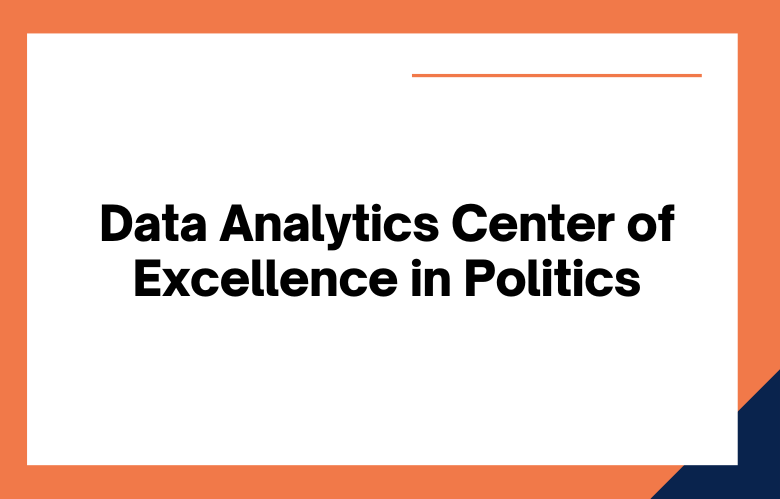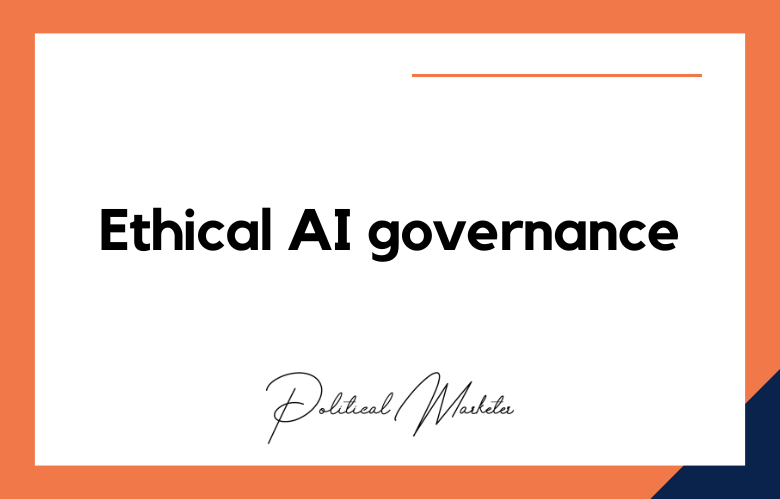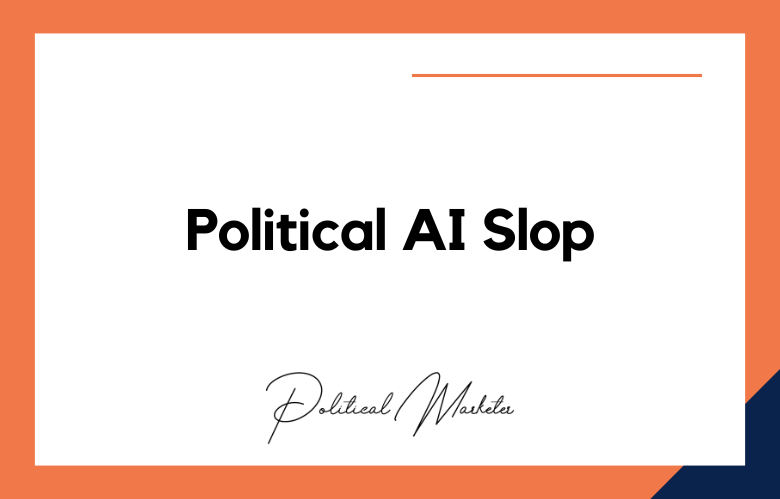Today, data analytics is seen as a must-have for any political campaign that wants to be competitive. A Data Analytics Center of Excellence (DACE) comes in.
What is a Data Analytics Center of Excellence?
A Data Analytics Center of Excellence is a centralized unit within an organization responsible for developing best practices in data analytics. A Data Analytics Center of Excellence should comprise experienced data analysts well-versed in the latest analytical methods and tools. The team should also profoundly understand the organization’s specific data needs and objectives.
The Data Analytics Center of Excellence should be charged with identifying new and innovative ways to use data to forward the organization’s goals. They should also be responsible for training other organization members on using data analytics effectively. And finally, the DACE should be tasked with continuously monitoring the organization’s data analytics infrastructure to ensure it can scale as needed.
Why is a Data Analytics Center of Excellence critical?
A well-functioning Data Analytics Center of Excellence is critical for any organization that wants to use data analytics effectively. Without a centralized unit driving the adoption of best practices, it is too easy for an organization to get stuck using outdated methods or relying on individual experts who may not have the same depth of knowledge as a team of experienced analysts.
A Data Analytics Center of Excellence can also help an organization save time and money by identifying opportunities for reusing existing data or sharing data across departments. And finally, a Data Analytics Center of Excellence can provide peace of mind by ensuring that an organization has someone who focuses on maintaining and improving its data infrastructure.
A clear business objective
The first step in creating a CoE is to identify a clear business objective that the CoE will help to achieve. This could be anything from improving campaign outreach to understanding voter behavior better. Once the business objective has been identified, the team can develop a plan to achieve it.
The right skills and knowledge
A successful CoE requires a team of people with the right skills and knowledge to do the job. This includes everything from data engineers who can build platforms to analysts who can turn data into insights. To make the right team, it’s essential to identify the skills and knowledge gaps within the organization and find people who can fill them.
The right tools and technologies
For a CoE to be successful, it needs access to the right tools and technologies. This includes data storage and visualization platforms to analytical tools and software. The team should understand the available tools and technologies and how they can achieve the business objective.
A culture of collaboration
A successful CoE requires a culture of collaboration to function correctly. Everyone involved—from the senior leadership team to the front-line staff—must work together towards a common goal.
Define the goals of the CoE.
Before anything else, it’s essential to define the goals of the data analytics CoE. What does the organization aim to get by establishing a CoE? Answering this question will help shape the rest of the process and ensure everyone is on the same page.
Assemble the right team.
Once the goals of the CoE have been defined, it’s time to assemble the team to make it happen. The team should include people with diverse backgrounds and skill sets, including data analysts, software engineers, campaign strategists, etc. The team should also have a mix of seniority levels so that experienced experts and fresh voices bring new ideas.
Create a roadmap
With the team in place, it’s time to start putting together a roadmap for how to achieve the goals of the CoE. The roadmap should include short-term and long-term objectives and be designed to adapt as new challenges and opportunities arise.
Build buy-in across the organization.
Ensuring buy-in from stakeholders across the organization is critical for success. The leadership team needs to be on board with establishing a data analytics CoE and be willing to invest resources into making it happen. Additionally, every team member needs to be bought into the vision for what the CoE can achieve. Without buy-in from everyone involved, achieving success will be difficult.
Creating a data analytics center of excellence within the Democratic Party will require buy-in from party leaders at all levels. Here are a few steps that can be taken to get started:
- Appoint a party leader who is responsible for data analytics. This person will build a data analytics infrastructure within the party.
- Set up a dedicated team of data analysts. This team will collect and analyze data to support decision-making within the party. The team should access all relevant data sources, including voter, poll, financial, and social media data.
- Invest in training for party leaders and staff. Data analytics is a complex topic, and people will need time to learn how to use data effectively. Party leaders and staff should receive statistical analysis, data visualization, and machine learning training.
- Make data-driven decision-making a priority. Once the infrastructure is in place and people have been trained to use data effectively, making decisions based on data rather than intuition or personal relationships is essential. This may require changes to organizational culture and processes, but it’s necessary for making the most of the investment in data analytics.
Creating a Data Analytics Center of Excellence
A data analytics center of excellence (DACOE) is a centralized unit within an organization responsible for developing and managing data analytics initiatives. The DACOE should comprise individuals with strong technical skills and a deep understanding of the organization’s business objectives.
There are four critical components to creating a successful DACOE:
- Define the organizational structure and governance model for the DACOE.
- Identify and assess the analytic data needs of the organization.
- Develop and implement best practices for data analytics across the organization.
- Manage and monitor the performance of the DACOE on an ongoing basis.
Each of these components is essential to the success of the DACOE. Let’s take a closer look at each one:
Define the organizational structure and governance model for the DACOE. The DACOE should comprise individuals with strong technical skills and a deep understanding of the organization’s business objectives. Furthermore, the DACOE should clearly understand how it will interact with other parts of the organization, such as IT, marketing, and operations.
Identify and assess the analytic data needs of the organization. The initial step is identifying which business functions would benefit from data analytics.
Once identified, these functions should be prioritized based on their potential impact on the organization’s bottom line. After that, assessing what data is necessary to support these business functions and where it can be obtained is critical.
Develop and implement best practices for data analytics across the organization. Once the organizational structure and governance model has been defined and the analytic data needs of the organization have been identified, it is time to develop best practices for data analytics across the organization. These best practices should be designed to improve efficiency, accuracy, and timeliness while reducing costs.
Manage and monitor the performance of the DACOE on an ongoing basis. Even after all these steps have been taken, it is essential to remember that the work is not done ––the DACOE must be monitored continuously to ensure that it meets all its objectives.
A DACE can be created by following these simple steps:
Establish a team of experts
The initial step is assembling a team with the necessary skills and expertise. The team will be responsible for developing and implementing the data analytics strategy.
Define the goals and objectives.
The next step is to define the goals and objectives of the DACE. What does the organization hope to accomplish? What specific problems does it expect to solve? Once these questions have been answered, the team can begin developing an action plan.
Implement the plan
The third step is to put the plan into action. This involves collecting and analyzing data, developing models and algorithms, and conducting experiments. The goal is to generate insights that can be used to improve decision-making.
Evaluate results
The fourth and final step is to evaluate the results of the DACE’s efforts. Did it achieve its goals? What lessons were learned? What could be improved? Answering these questions will ensure that the DACE is constantly evolving and improving.
Conclusion
Data analytics is becoming increasingly important in politics, as evidenced by the Obama campaign’s successful use. But with several different data sources and analytical methods, it can be challenging to know where to start.
A Data Analytics Center of Excellence (DACE) comes in. A Data Analytics Center of Excellence is a centralized unit within an organization responsible for developing best practices in data analytics.
A Data Analytics Center of Excellence should comprise experienced data analysts well-versed in the latest analytical methods and tools.
The team should also profoundly understand the organization’s specific data needs and objectives.
Data analytics is changing the political landscape. The ability to crunch numbers and understand trends can give an edge to candidates and officeholders. However, data analytics also require workforce, time, and money to be effective.
Setting up a Data Analytics Center of Excellence in Politics will help your campaign or office better use data analytics and improve the chances for success. If you want to learn more about how we can help you set up such a center, please do not hesitate to contact us.
We look forward to hearing from you!
How to Create a Data Analytics Center of Excellence in Politics: FAQs
What Is A Data Analytics Center Of Excellence In Politics?
It is a centralized unit within a political party or campaign that leads data strategy, analytics operations, and insight generation to support electoral decision-making.
Why Do Political Campaigns Need A Data Analytics Center Of Excellence?
To consolidate data expertise, drive voter intelligence, optimize campaign performance, and ensure informed, evidence-based strategies.
What Are The Core Functions Of A Political Data Analytics Center?
Functions include voter segmentation, predictive modeling, issue analysis, performance tracking, and real-time campaign monitoring.
How Does A Data Center Of Excellence Improve Campaign Efficiency?
By centralizing analytics capabilities, reducing data silos, streamlining reporting, and enabling faster, more accurate decision-making.
What Types Of Political Data Are Handled By These Centers?
Voter demographics, polling data, social media insights, ground reports, event feedback, and past electoral performance data are commonly analyzed.
Who Leads A Data Analytics Center In A Political Environment?
Typically led by a Chief Data Officer or Data Strategy Head, supported by analysts, data engineers, visualization experts, and field intelligence liaisons.
How Does It Support Voter Targeting And Micro-Messaging?
By building predictive models that cluster voters into actionable segments based on behavior, preferences, geography, and turnout likelihood.
Can A Data Center Help In Rapid Response During Political Crises?
Yes, real-time dashboards and social listening tools allow for immediate issue detection and coordinated response strategies.
What Tools Are Commonly Used In A Political Data Center?
Platforms like Tableau, Power BI, R, Python, SQL, Google BigQuery, and CRM systems like NationBuilder or Ecanvasser are widely used.
How Is Data Governance Maintained In Such A Setup?
Through defined access protocols, data encryption, privacy compliance (e.g., GDPR/DPDP), and centralized audit trails for accountability.
What Role Does AI Play In A Data Center Of Excellence?
AI supports predictive analytics, sentiment analysis, chatbot voter interactions, and automated anomaly detection across campaign data.
How Can This Center Influence Campaign Messaging?
Insights from data analysis guide narrative development, issue prioritization, and content timing to match public sentiment and interest.
Is A Data Analytics Center Relevant For Local And Regional Campaigns?
Yes, even local campaigns benefit from data-driven voter insights, especially in tightly contested or demographically complex constituencies.
What Is The Difference Between A Data Team And A Center Of Excellence?
A regular data team may serve a single campaign, while a Center of Excellence is institutionalized, scalable, and designed for long-term strategic use.
Can These Centers Help In Post-Election Performance Analysis?
Absolutely. They assess turnout patterns, issue resonance, voter journey stages, and media impact to improve future strategies.
How Do Centers Integrate Field Data With Digital Metrics?
They collect data from canvassing apps, feedback forms, and booth-level surveys, then correlate it with digital ad performance and engagement analytics.
What Challenges Do Political Data Centers Commonly Face?
Challenges include data privacy concerns, inter-team coordination, lack of clean data, real-time integration gaps, and tech skill shortages.
How Does A Data Center Enhance Voter Engagement?
It identifies optimal contact times, preferred communication channels, and content personalization strategies to improve voter response.
Are There Ethical Considerations For Political Data Centers?
Yes, including consent management, bias mitigation, transparency in usage, and ensuring data is not used for manipulation or misinformation.
How Can Parties Build Their Own Data Analytics Center Of Excellence?
By investing in skilled talent, adopting the right tools, defining governance models, and aligning data goals with campaign objectives.











